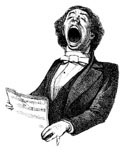
“Homosexuality” as a Philological Problem
ON THE DAMAGE BEING DONE BY DUBIOUS TERMINOLOGY
Ed. Note: Please be forewarned that this article contains explicit references to sexual acts.
Last spring, Crisis published two articles that call into question the entire notion of “homosexuality” and the Church’s treatment thereof: “Highlighting Same-Sex Attraction Is a Mistake” by Peter Jermann (March 28) and “Male Homosexuality and Priestly Formation” by Adrian Reimers (April 2). “In the very use of the words ‘homosexual’ and ‘heterosexual,’” Jermann writes, “we accept the corruption of ‘sexual’ and ‘sexuality.’ In using these words, the Church succumbs to the very corruption it must address and correct.” Reimers maintains, “There is no homosexuality…. If we are to address the ‘homosexual problem’ in the Church, then we must first understand what we are talking about, and whatever that is, it is not a thing called homosexuality.”
I believe that these arguments can be defended and buttressed by invoking evidence from philology — that is, the close study of words, their origins, and their relationships in written texts. Ignoring this evidence has created grave problems for the Church in her efforts to address what Reimers calls the “homosexual problem” and, indeed, the Sexual Revolution generally.
Neither the words “homosexual” or “homosexuality” nor their equivalents in any language known to me existed before the late 19th century. According to the most recent update in the online version of the Oxford English Dictionary, the word “homosexual” first appeared in 1869 in a book in German by K.M. Kertbeny, who was challenging a law criminalizing sodomy. Richard von Krafft-Ebing subsequently used the terms in Psychopathologia Sexualis (1886), which assays to treat sodomy not as a legal, moral, or spiritual issue but as a medical problem. “Homosexual” and “homosexuality” came into English in an 1892 translation of Krafft-Ebing’s work and were taken up enthusiastically by Havelock Ellis in Studies in the Psychology of Sex (1897). “Heterosexual” and “lesbian” (in the sense of a female “homosexual”) have similar etymological histories.
To be sure, men had been aware of perversions of normal sexual activity for millennia by the time these terms were devised, although moral and legal condemnation of such practices seems to have been confined to the Judeo-Christian and Islamic traditions in the ancient world. The belief that God created man in His own “image and likeness” confers upon men an inherent dignity and responsibility unknown to paganism, but awareness of this dignity and responsibility makes violations of human nature especially grievous offenses. Nevertheless, neither heathen polytheists nor any of the forms of monotheism stemming from Abraham acknowledged the existence of a “homosexual” class of men distinct from others. There was no term to identify “homosexuality” before recent times because there was no concept to which it corresponded.
You May Also Enjoy
To live in the truth, we must want the truth. That means doing what we can to get at the reality hidden behind the empty slogans of partisan ideology.
States expend considerable effort rewriting statutes using "gender-neutral vocabulary" and manipulating our language in the service of a broad sociopolitical agenda.
The Vatican evidently wants neither to ban nor not ban homosexuals from the priesthood, since it again chose to do neither in a recently-issued document on clerical formation.

